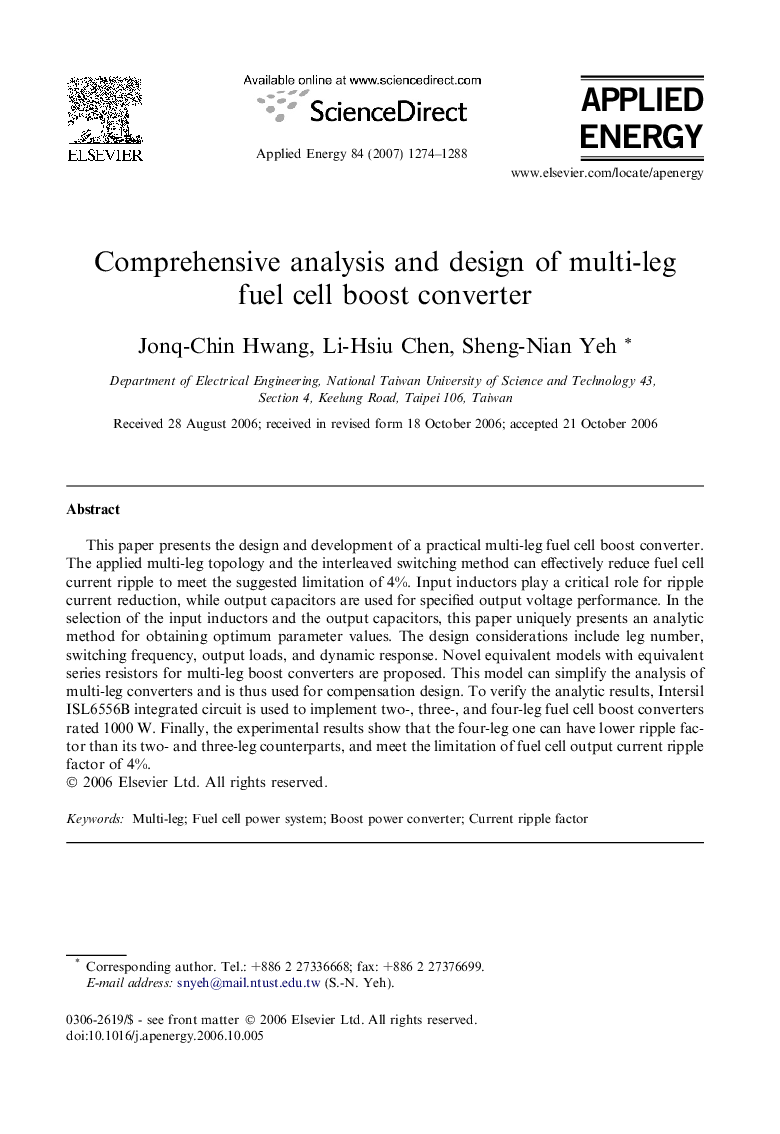| Article ID | Journal | Published Year | Pages | File Type |
|---|---|---|---|---|
| 245321 | Applied Energy | 2007 | 15 Pages |
This paper presents the design and development of a practical multi-leg fuel cell boost converter. The applied multi-leg topology and the interleaved switching method can effectively reduce fuel cell current ripple to meet the suggested limitation of 4%. Input inductors play a critical role for ripple current reduction, while output capacitors are used for specified output voltage performance. In the selection of the input inductors and the output capacitors, this paper uniquely presents an analytic method for obtaining optimum parameter values. The design considerations include leg number, switching frequency, output loads, and dynamic response. Novel equivalent models with equivalent series resistors for multi-leg boost converters are proposed. This model can simplify the analysis of multi-leg converters and is thus used for compensation design. To verify the analytic results, Intersil ISL6556B integrated circuit is used to implement two-, three-, and four-leg fuel cell boost converters rated 1000 W. Finally, the experimental results show that the four-leg one can have lower ripple factor than its two- and three-leg counterparts, and meet the limitation of fuel cell output current ripple factor of 4%.
